Toshiba were the first manufacturer in the world to mass-produce drives using glass platter technology, beginning with the MK1122FC. The Toshiba MK2024FC followed this trend, being a next-iteration product using this technology, releasing in 1991.
While many think of the 75GXP when it comes to glass-substrates on drive platters, Toshiba beat everyone else to the game, with much more successful results. Areal Technology were the first to produce a prototype drive with glass platters, but Toshiba were the first to mass produce & market them.
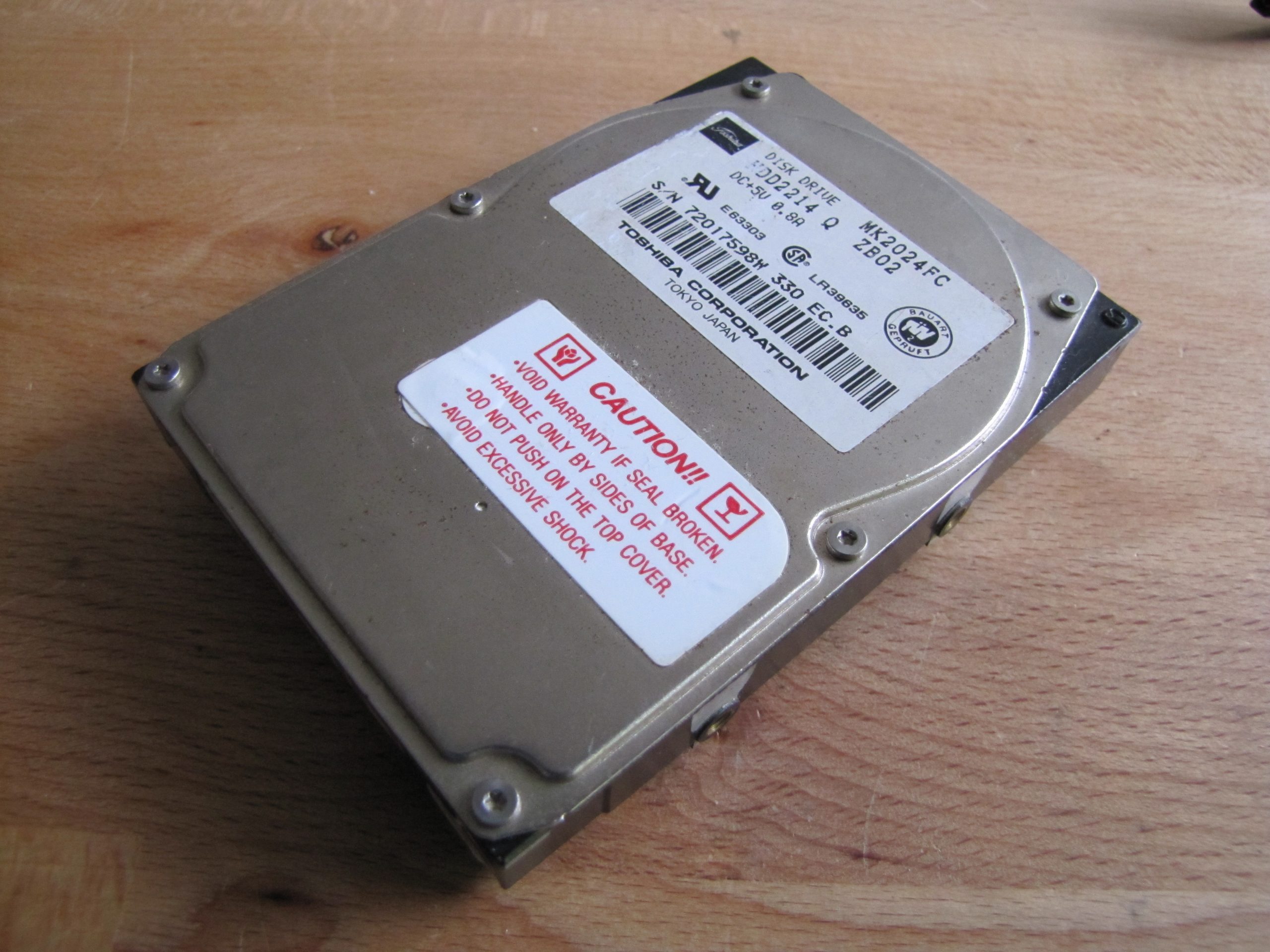
Drive Attributes ------------------------------------- Toshiba MK2024FC ------------------------------------- Capacity 86MB Mfc Date 1992-07 Format 2.5" Height 19mm Interface PATA Platters 2 Heads 4 Cache 32KB RPM 3200 CHS 977/4/43 (native) Origin Japan (TDSC, Tokyo) -------------------------------------
In what seems like a staggeringly poor achievement compared to 2.5″ drives of today, this drive has a massive z-height of 19mm, whilst holding only two platters.
Each platter exhibits a density of 43MB, equating to a per-surface density of 21.5MB. Technology has certainly come a long way.

Crusty appearance aside, this drive has a reasonably bare label, being exceedingly similar to their 3.5″ model counterparts at the time such as with the MK-1034FC. Nonetheless, these were built in Toshiba’s factory in Tokyo, Japan, much the same as all of their other drive models at the time.
It’s important to note that Toshiba’s standard date indication embedded into the serial code is not upheld with such an early model. The month and year figures remain accurate, but the exact day this drive was made on is unclear. All MK2024FC’s seemingly have a 0 as the third character, which puts a few questions into when Toshiba adopted their standard format. Either way, this drive being from July of 1992 matches up!

As will be seen below, this drive required some maintenance prior to testing. Should the capacitor legs have been snipped a touch shorter? Perhaps. The pads are very delicate on this drive from capacitor leakage, which resulted in a somewhat sloppy looking repair-job. It’ll do for now, to be replaced with more suitable components in the future.
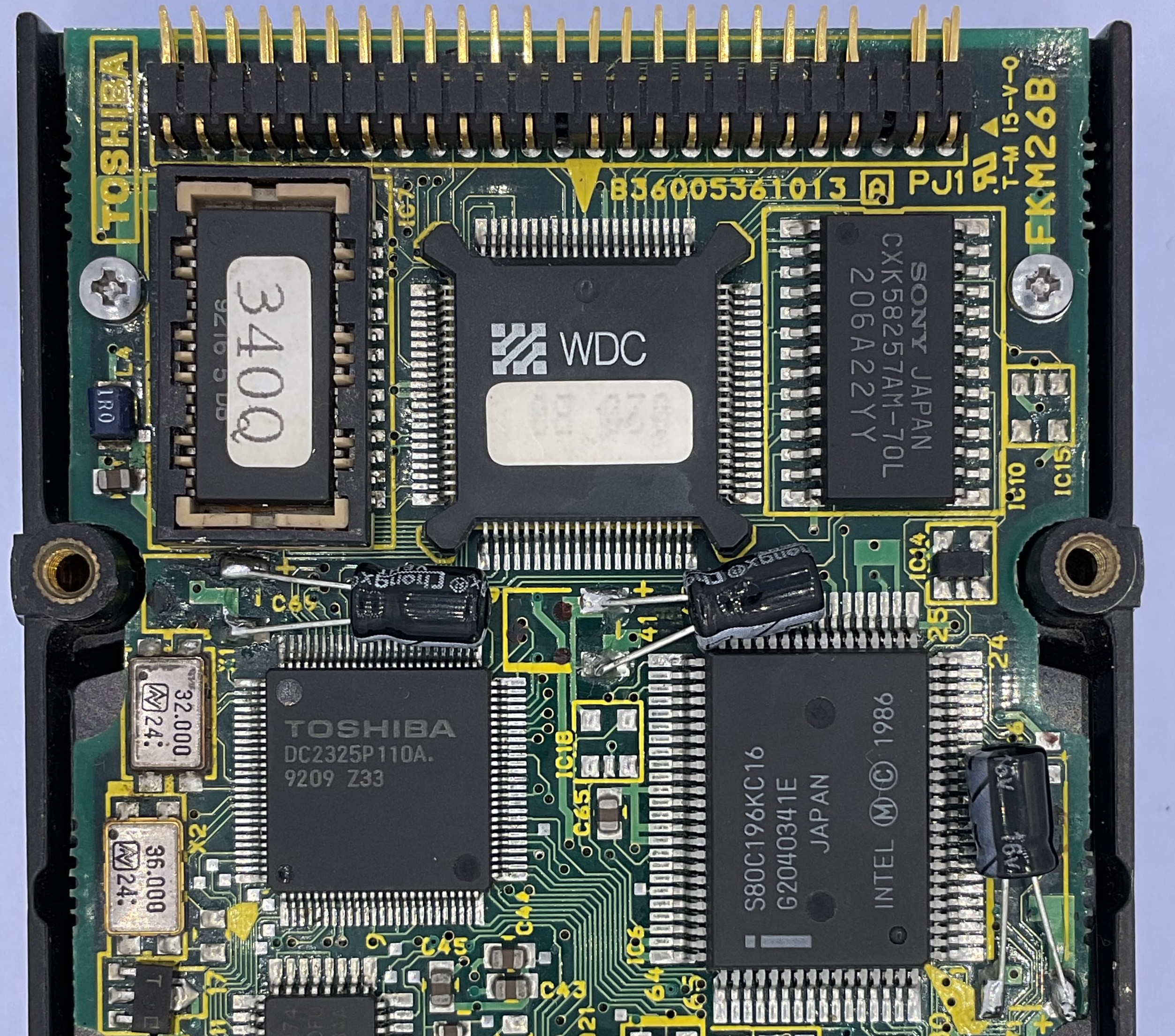
Here we’re met with a Western Digital interface IC, which isn’t a trend that continues with future Toshiba 2.5″ drives. Western Digital had a massive presence in the IC market when concerning hard drive control, which isn’t too surprising to see given the period, but it’s an interesting point to look back upon. The microcontroller IC is provided by Intel, being a ROMless CHMOS 16MHz MPU.
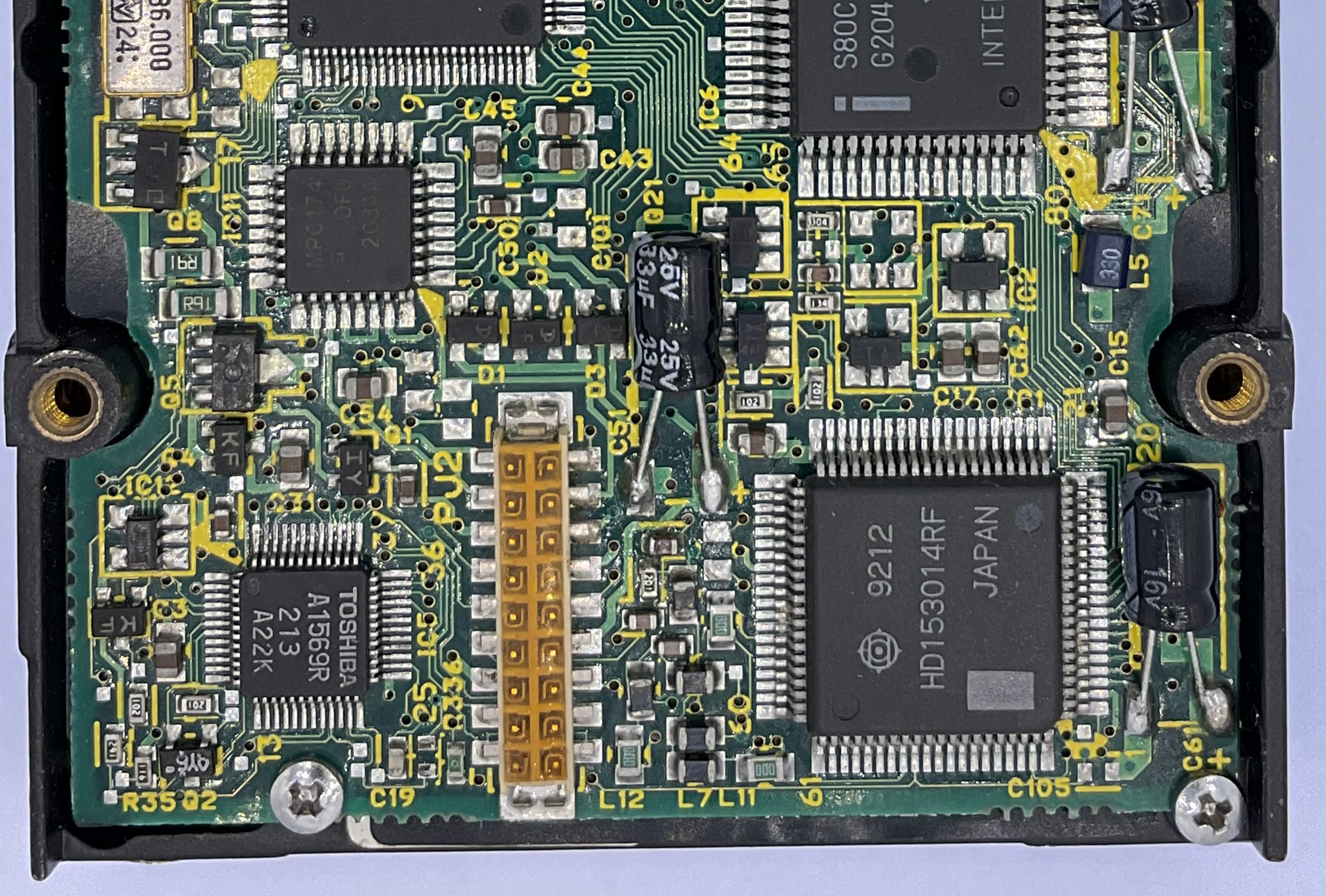
PJ2 connects the PCB to the head-stack assembly. Here we’re met with another big IC, hailing from Hitachi. It was produced in early 1992.
Interface Connector
+---------------------+
| o o o o o o......o |
| o o P1 o o o......P43
+-+-+-----------------+
| +-- J2: ON = Master, OFF = Slave
+---- J1: Reserved

These capacitors are notorious for failing in a rather horrific manner, those who have also dealt with Sega Game Gear’s would know far too well.

Fortunately, this drive cleaned up nicely! No damage to be seen. The pads themselves are rather delicate now, but it hasn’t caused any long-term damage.
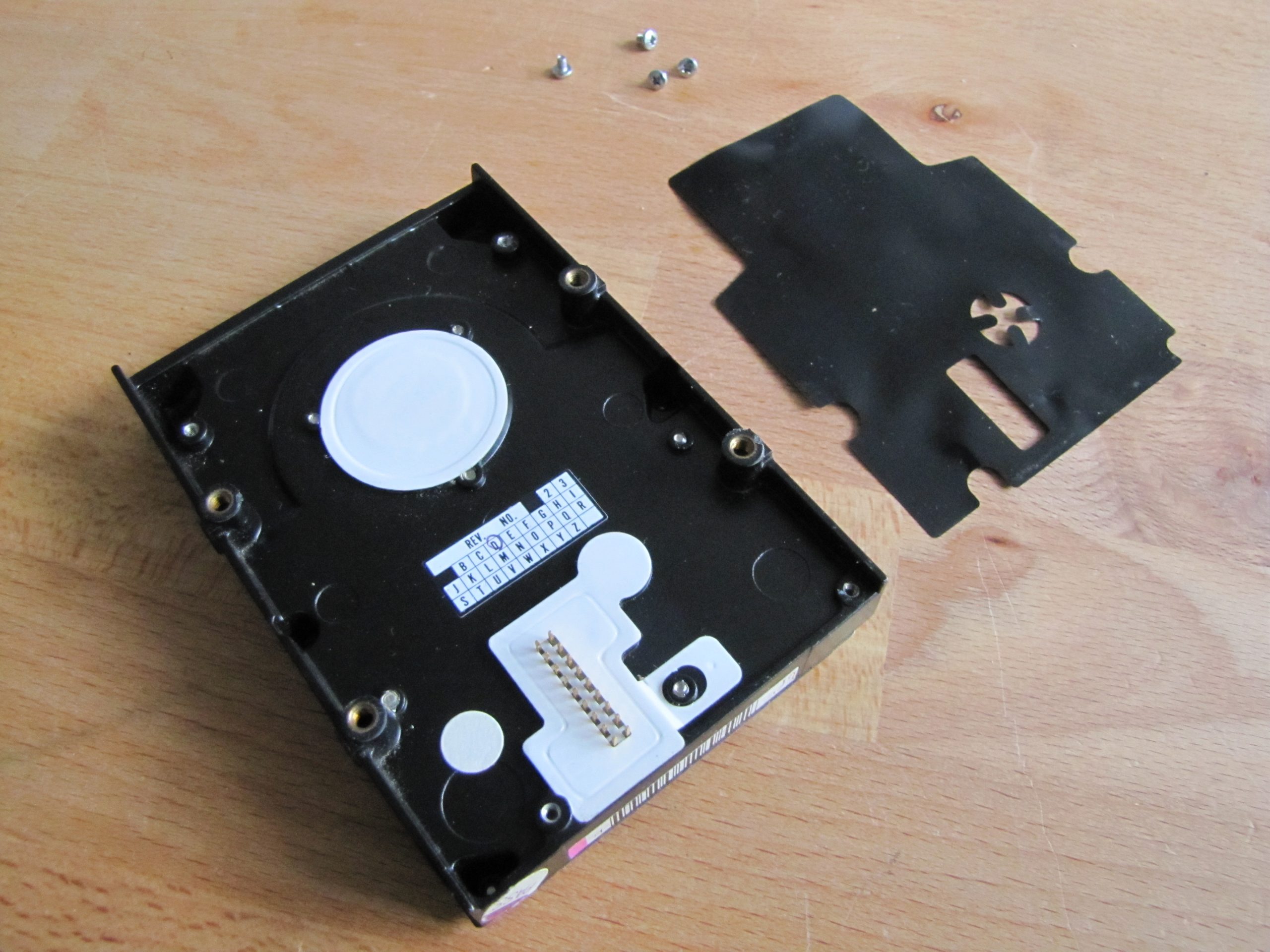
Taking a peek under the PCB reveals… nothing much. The spindle motor vendor is nowhere to be seen, alongside no interesting elements immediately popping out. Boo!
At least the design is quite nice.
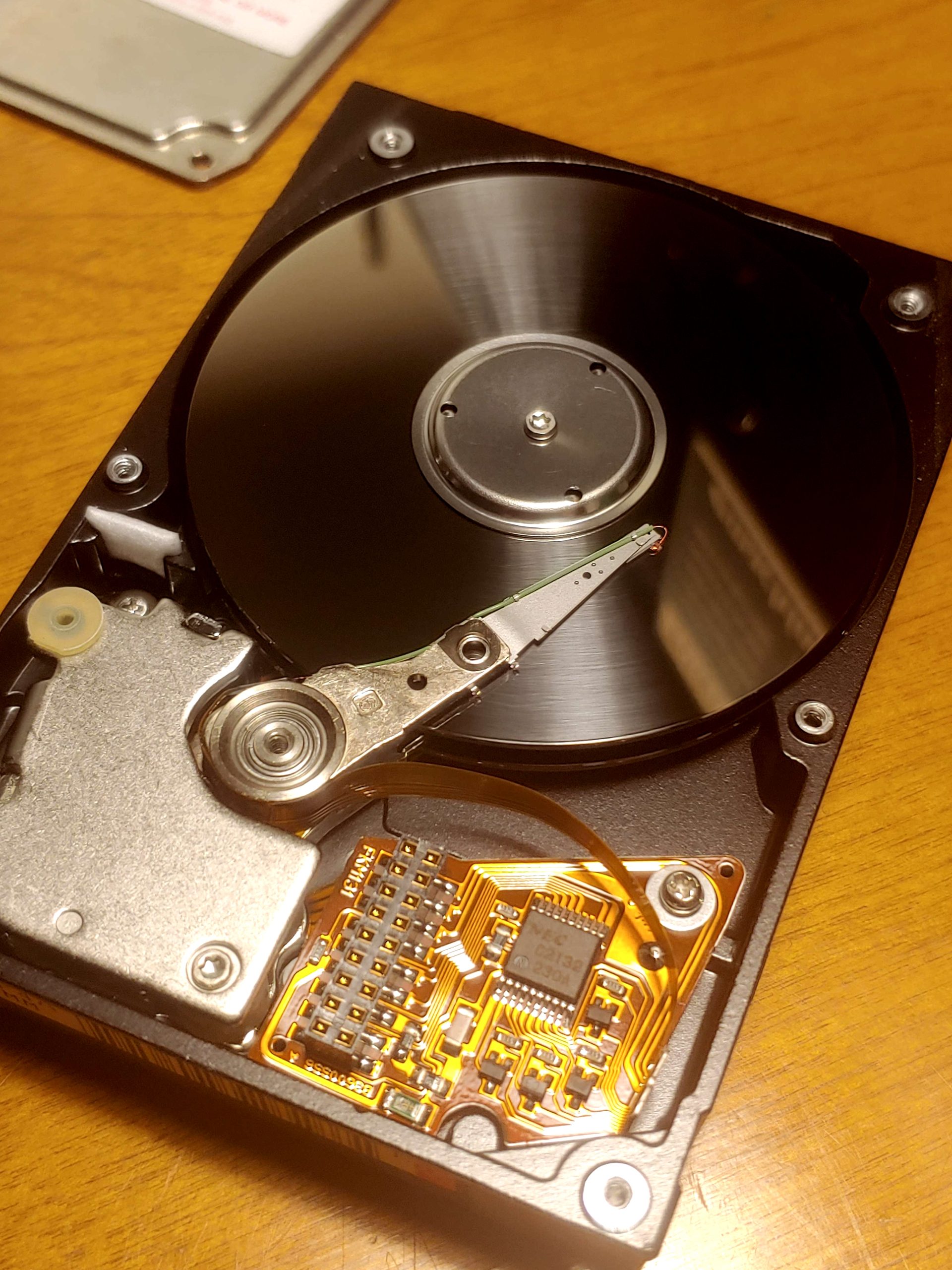
Confirming four heads alongside two platters, the entire z-height of the drive is populated. Glass platters back in the early 90’s were considerably thicker than with later iterations! Space constrictions are another concern, particularly with such an early 2.5″ unit.
NEC supplied the read/write preamp, which is a neat thing to find.
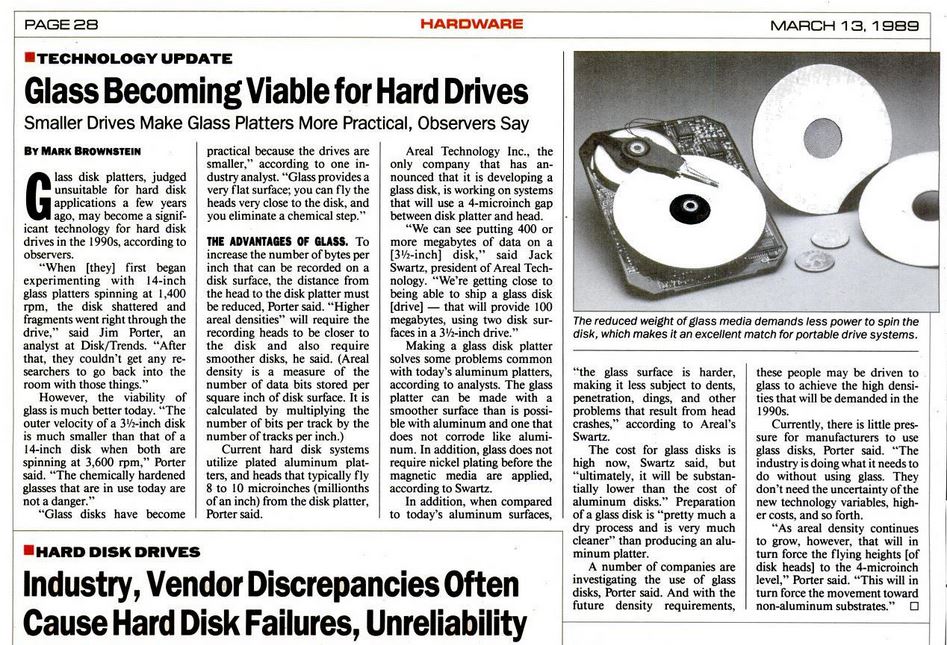
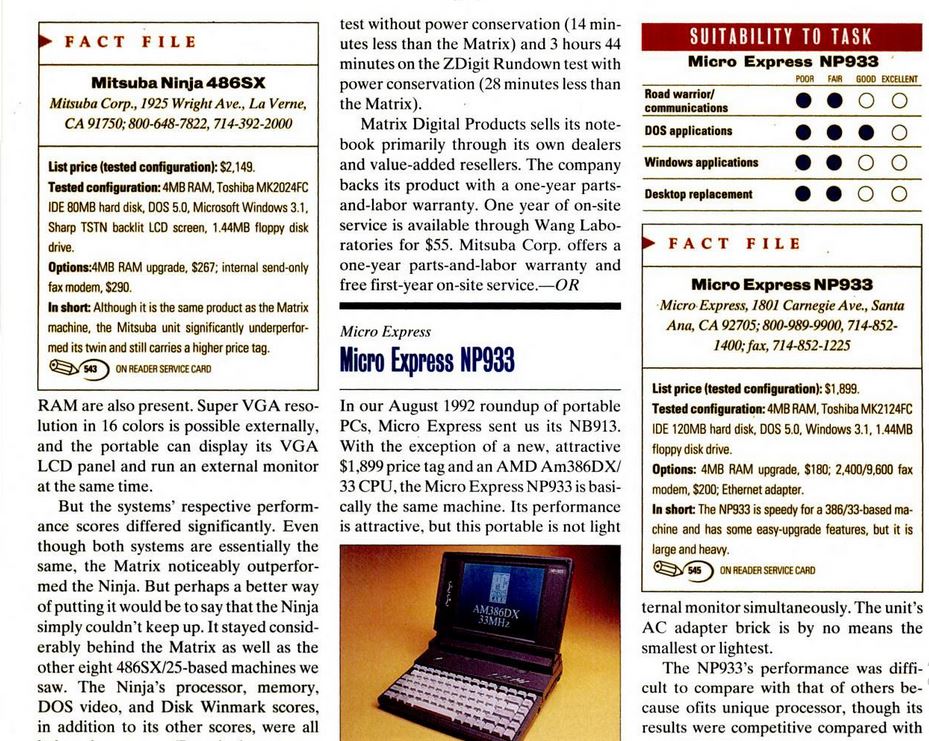
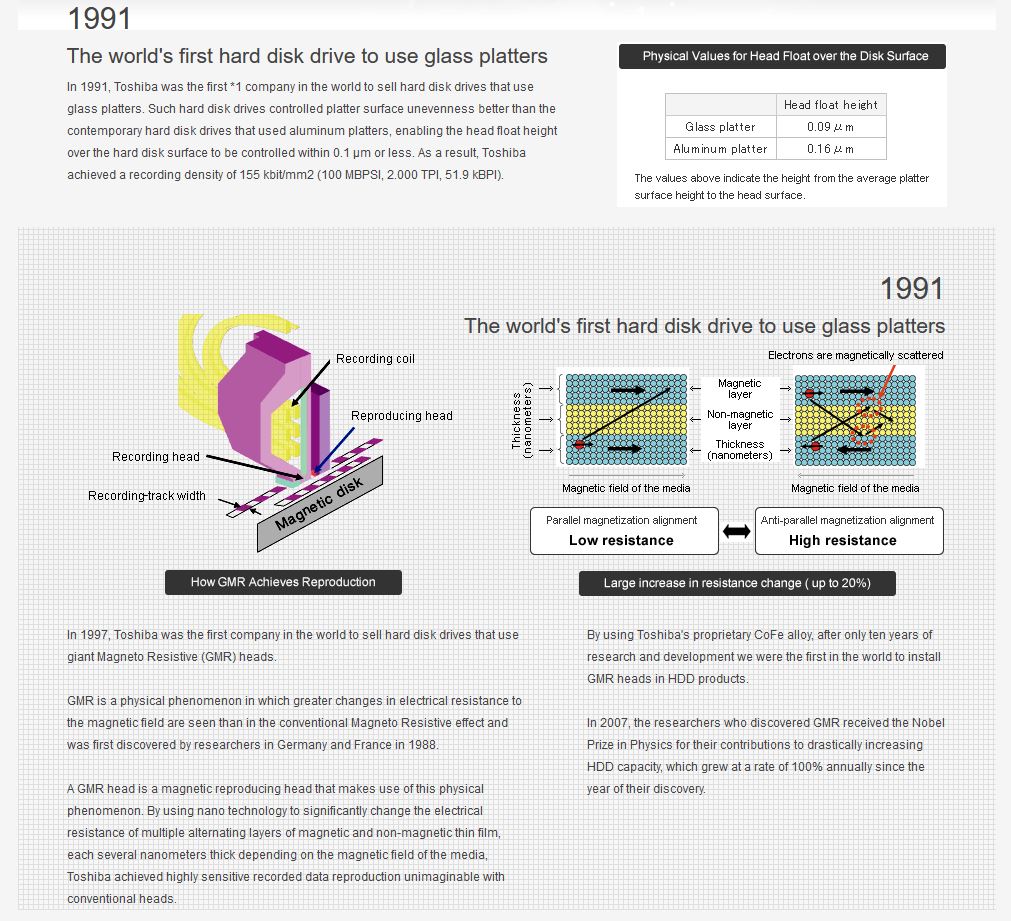
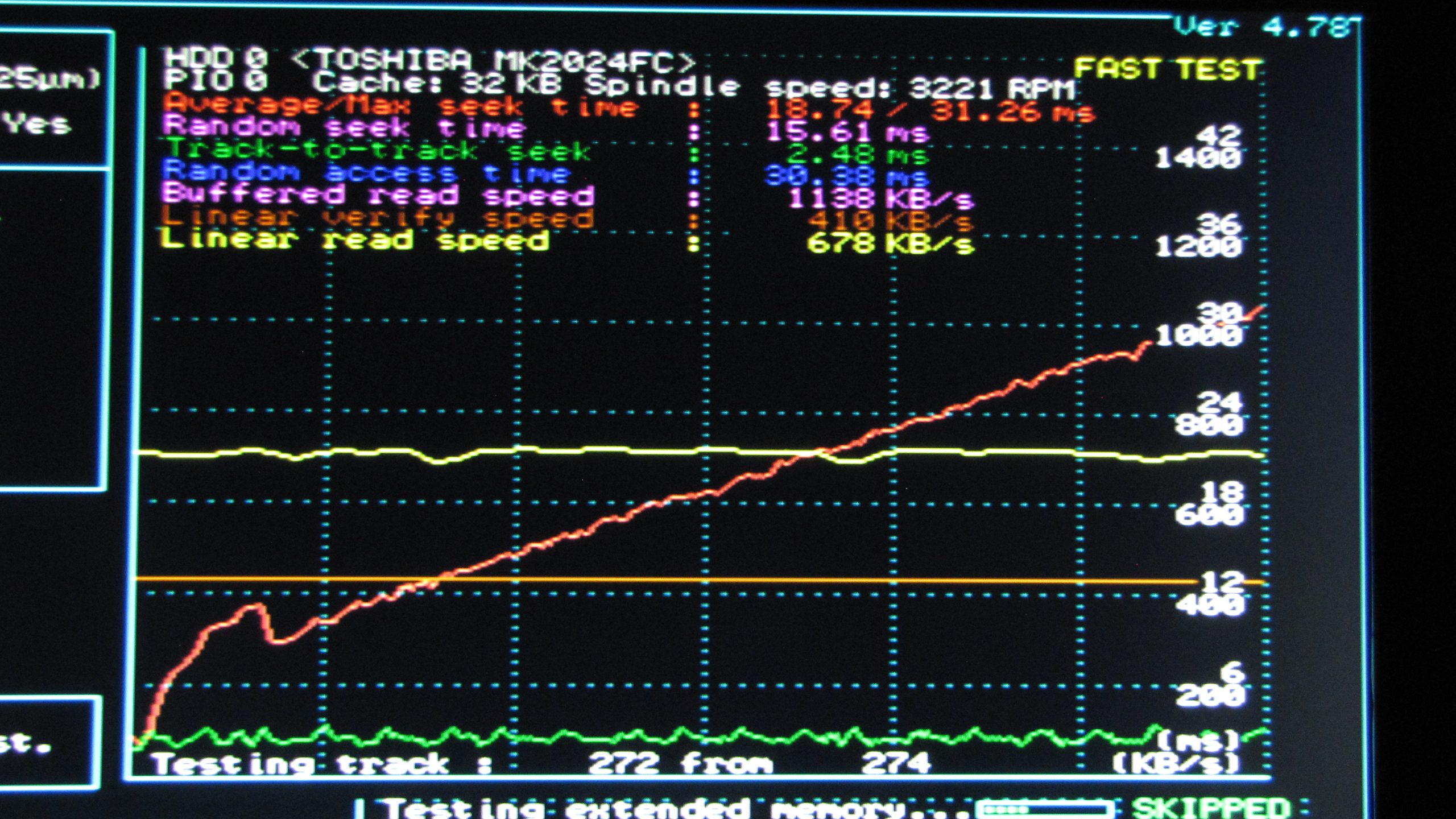
There’s nothing too special about the track layout on this, aside from the fairly interesting dip occuring in the first eighth of the surface. Performance is everything you’d expect from such an early model, far removed from the expectations of drives today.
So, how does this one do 30 years later? Only a single bad sector! Not too shabby. Toshiba certainly got glass platters right the first time.
If you missed the video I made on this drive, you can find it here:
References:
[1] InfoWorld (1989), Issue 13th March 1989, Page 28, Vol. 11,Nr. 11, ISSN-nummer 0199-6649, Published by InfoWorld Media Group Inc., Acquired from: https://books.google.com/books?id=BjoEAAAAMBAJ
[2] PC Mag (1992) Issue 22nd December 1992, Page 240, Vol. 11,Nr. 22, ISSN-nummer 0888-8507, Published by Ziff Davis inc., Acquired from: https://books.google.com/books?id=v9TVJ_G_sk8C
[3] Toshiba (2004), Experienced Hard Drive Manufacturing, Published by Toshiba Digital Media Network Taiwan Corporation, Acquired from: https://www.sdd.toshiba.com.tw/english/products/article02.aspx?ccid=4
[4] Mario Cruz (2023), YouTube channel available here: https://www.youtube.com/@mariocruz9540
[5] Toshiba MK-1122FC (1990), Why it’s important., Fumitake Shiraishi, Former Toshiba HDD Development Director – 2.5-inch HDDs, January 30, 2008, Acquired from: https://d1yx3ys82bpsa0.cloudfront.net/groups/ds-toshiba-mk1122fc.pdf Downloadable mirror: Toshiba MK-1122FC (1990), Why it’s important.